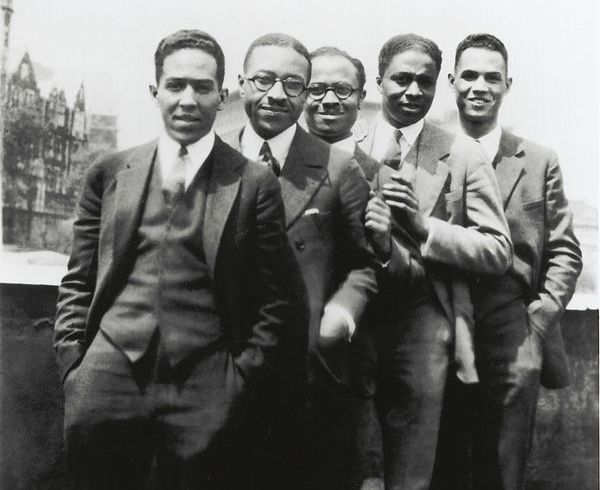By Kevin Douglas
Renowned in both the sciences and the literary world, Rudolph Fisher (ΦBK, Brown University) was the definition of a Renaissance Man. Born in Washington, D.C., on May 9, 1897, Fisher moved with his family when he was a small child, first to New York and then to Providence, Rhode Island, where he started school. He did not come from a prosperous family – his father was a clergyman and his mother was a homemaker who raised three children, of whom Rudolph was the youngest. He graduated from Providence’s Classical High School with honors in 1915. Four years later, he graduated from Brown University with a double major in English and biology, receiving honors for the latter. He went on to complete his master’s degree at Brown (1920), and then his medical degree (summa cum laude) at Howard University (1924).
As a young man with three impressive degrees under his belt, Fisher headed to New York City where both the arts and the sciences were booming. At Columbia University he took part in a fellowship to study how viruses reacted to ultraviolet rays. At the same time, he immersed himself in the vibrant cultural scene of Harlem. His move to New York would lead to wild success in his career as both a physician and as an artist.
Fisher was a pioneer in the emerging field of radiology. His work at Columbia led him to serve in various NYC hospitals as a specialist in radiology – or, the use of radiant energy, like X-rays, in the diagnosis and treatment of disease. In 1927, he became the superintendent of International Hospital in New York, while at the same time he began a private practice in Harlem. Fisher was one of only thirty Black physicians to practice or teach radiology in 1934.

In addition to his brilliance in the sciences, Fisher made himself known as a vibrant, multifaceted artist. As a musician, he worked with Paul Robeson, who was himself to achieve international fame as a singer and actor. Fisher composed songs for Robeson’s premiere New York concert in 1929. Fisher would leave his biggest mark as a writer, publishing fifteen short stories and two novels in the span of a decade. His first short story, “The City of Refuge,” appeared in the Atlantic Monthly in 1925. The publication put him on the map, as he and other Harlem Renaissance writers like Langston Hughes, Zora Neale Hurston, and Claude McKay broke into the mainstream as writers to be reckoned with. Hughes singled out Fisher as the “wittiest of these New Negroes of Harlem. [He] always frightened me a little, because he could think of the most incisively clever things to say, and I could never think of anything to answer.”
Fisher’s life was tragically cut short in 1934, at the age of 37, due to abdominal cancer. One can only imagine how much more he could have achieved had he lived a longer life. His influence can still be seen today, as his writing continues to be celebrated. Even his brief stint as a dramatist has seen longevity – his unpublished play The Conjure-Man Dies, adapted from his novel of the same name, was produced as recently as 2002 at the University of Pittsburgh. Despite his short life, Fisher’s body of work indicates a hunger for knowledge that any Phi Beta Kappa scholar should strive toward. Fisher didn’t limit himself to one specialization. He embraced the world from both an artistic and scientific approach and enriched both of his professions by doing so. A man with humble beginnings, Rudolph Fisher found success through the constant pursuit of knowledge.
If you are looking for some classics to read this summer, consider adding Rudolph Fisher and other figures of the Harlem Renaissance to your reading list.
Kevin Douglas is a senior at the University of Denver majoring in theater and English. He was inducted into Phi Beta Kappa there during his junior year. The University of Denver is home to the Gamma of Colorado chapter of Phi Beta Kappa.




